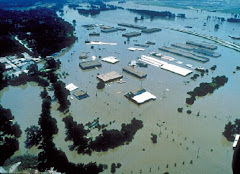Global Warming - Effects, Consequences and Action
Global warming is a serious issue that requires immediate action to be resolved. We can't afford to procrastinate when it comes to global warming because the more we put it off for the next day, the bigger its effect will be on our planet.
Every individual is enjoined to work hand-in-hand to stop global warming. We don't have to wait for the government to come up with drastic policies to resolve this issue. Each one of us can do something to stop it. You don't have to do great things because small things done with great love can create a huge impact.
Everything starts from very little effort and here's mine. I came up with a list of alternatives that can help stop global warming.
1. Compact fluorescent light bulbs are great alternatives for incandescent light bulbs. CFL bulbs can save as much as 60% of energy than regular light bulbs without sacrificing the amount of light that you will receive. You don't have to worry because CFL light bulbs are not very expensive. They are relatively cheaper than their incandescent counterparts.
2. Instead of putting your fridge or freezer beside the boiler or stove, move them to a different location. A fridge that stands beside a stove consumers more energy than one who doesn't. This is practically common sense. Freezers or refrigerators use cold air to preserve food while stoves are "hot appliances." If you let them sit beside each other, the fridge will take longer time to cool up.
3. Subscribe to online fax instead of using traditional fax machines. Online fax can give you a lot of savings. First, it saves paper because everything is received via email which gives you the option to print only the fax messages that needs to be printed. If you frequently receive junk fax, then you don't have to worry about spending too much paper on them. Second, online fax saves you a lot of money because you don't have to pay for an additional phone line and other maintenance stuffs like fax papers and toners. Lastly, you save a lot on your electricity because you don't need a separate fax machine.
4. Bring your own water bottle and junk bottled water. If you are going out on a picnic or on a trip, instead of buying bottled water, bring your own. Fill it up night and put it in the fridge a day before your actual trip so that you will be assured of a cold water supply. On the other hand, if you prefer ice-cold water, put your bottled water in the freezer. Just make sure that you don't leave it for more than a day or else, your bottle will be disfigured.
5. When you're out to purchase your groceries, bring your own bag. Instead of having your groceries in paper or plastic bags, why not bring your own bag? You are not just reducing your carbon footprint, but you are also grocery-ing in style!
Article Source: http://EzineArticles.com/?expert=Tina_L_Douglas


